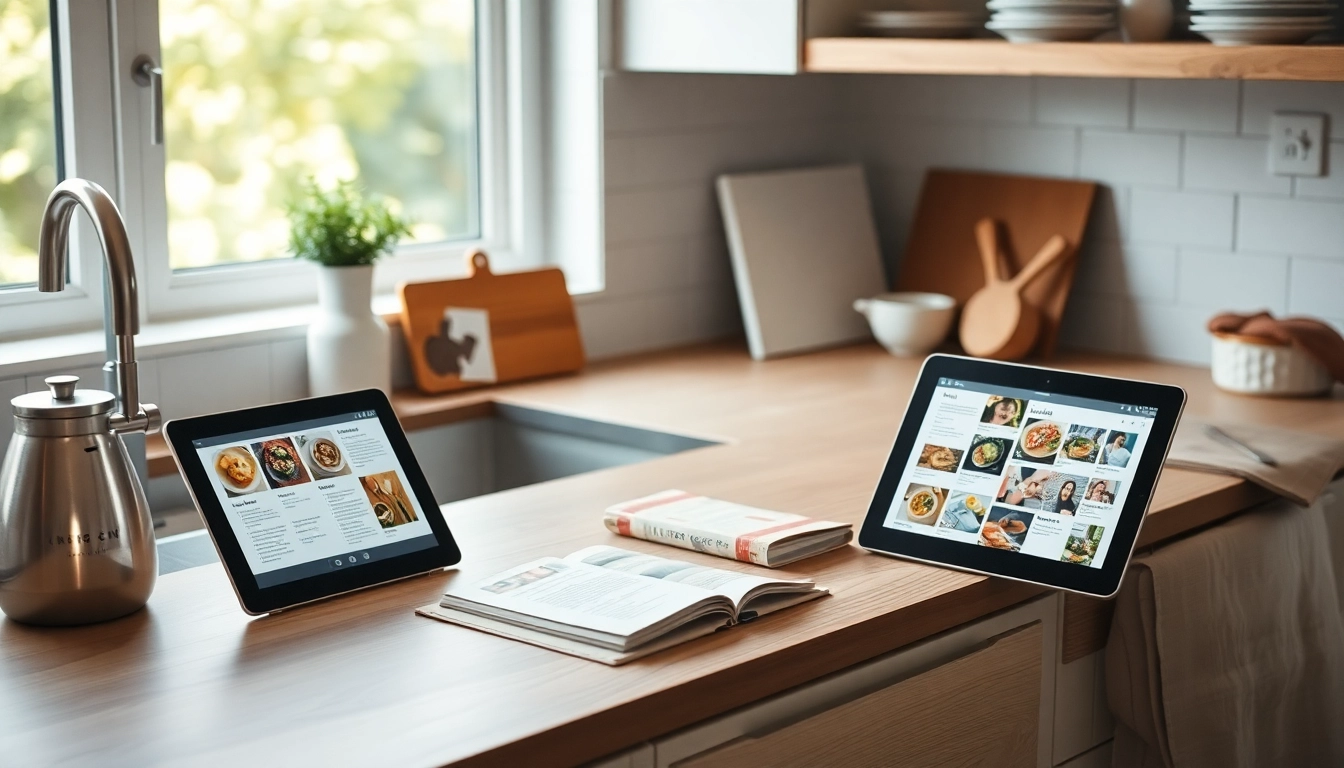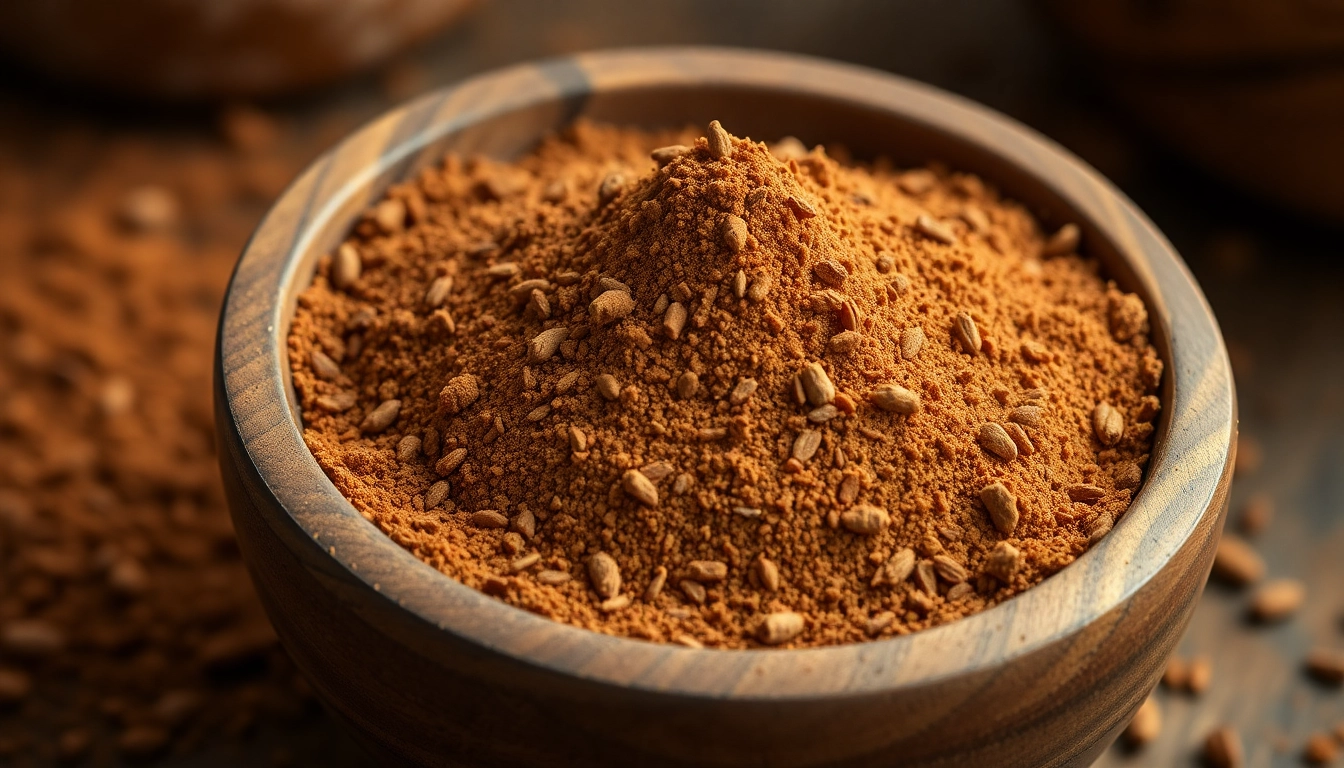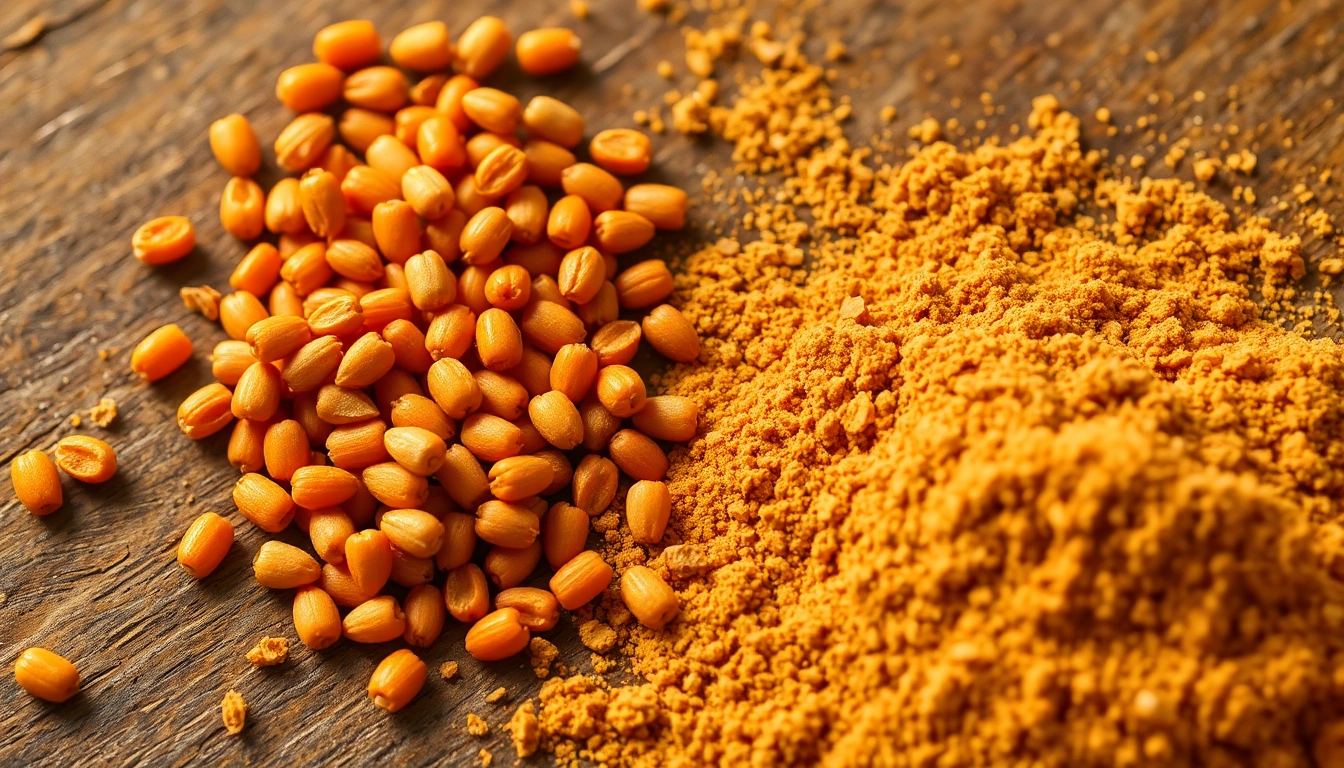Understanding the Basics of Recipe Organization
Why Organizing Your Recipes Matters
In today’s fast-paced culinary landscape, having a well-organized recipe collection is more than just a matter of convenience—it is the key to boosting your kitchen efficiency, reducing stress, and enhancing your overall cooking experience. An organized collection allows you to quickly find the perfect recipe when needed, experiment with new dishes confidently, and preserve cherished family heirlooms for generations to come. Whether you’re a home cook, aspiring chef, or culinary hobbyist, mastering the art of recipe organization can profoundly impact your daily meal planning and long-term culinary growth.
Imagine starting a meal planning session without scrambling through piles of papers, digitized notes, or misplaced cookbooks. Instead, you access a streamlined system that provides instant access to your favorite recipes sorted by cuisine, occasion, or dietary need. This seamless process saves time, minimizes frustration, and frees your mental space to focus on creativity in the kitchen. Furthermore, a thoughtfully organized cookbook collection fosters consistency, encourages culinary experimentation, and helps you develop personalized cooking routines aligned with your nutritional goals.
To achieve this level of efficiency, it’s essential to organize recipe collection effectively, whether digitally or manually. Adopting strategic methods tailored to your habits and preferences can transform your culinary endeavors from chaos to clarity, ensuring you enjoy cooking instead of hunting for that elusive recipe.
Common Challenges in Managing Recipes
Despite the desire for an orderly collection, many cooks face barriers that hinder effective recipe management. These challenges include inconsistent formats, scattered storage locations, and the overwhelming volume of recipes accumulated over months or years.
- Fragmented Storage: Recipes might be stored across various places—piles of printed cards, digital folders, bookmarks, and handwritten notes—making it difficult to locate specific dishes efficiently.
- Inconsistent Formats: Different recipes come in different formats, from handwritten notes and printed pages to digital files or photos, complicating the process of categorization and retrieval.
- Lack of a Systematic Approach: Without a predefined system, recipes tend to accumulate haphazardly, leading to duplication, forgetfulness, or even losing treasured family recipes.
- Time-Consuming Searches: When recipes are poorly organized, searching for a particular dish can eat into valuable cooking or meal prep time.
Overcoming these obstacles requires understanding proven methods for organizing recipes and committing to a consistent system. The rewards include faster meal planning, reduced kitchen stress, and a more enjoyable cooking journey.
Different Formats: Digital vs. Paper
One of the most significant decisions in recipe organization revolves around choosing between digital and paper formats—or adopting a hybrid approach. Each has distinct advantages and challenges that influence your system design.
Digital Formats
Digital recipe management offers unparalleled flexibility, easy searchability, and space-saving benefits. You can store thousands of recipes without clutter, access them from any device, and incorporate multimedia elements such as photos or videos. Digital tools like recipe apps, cloud storage services, and document organizers streamline the process of capturing, categorizing, and updating recipes efficiently. For instance, platforms like Recipe Keeper facilitate cross-device synchronization, making recipes available anywhere, anytime.
However, digital formats can be overwhelming if not properly managed. Files may become disorganized, and outdated recipes may linger. Ensuring your digital system remains tidy requires consistent categorization, regular cleanups, and employing search-friendly tags.
Paper Formats
Traditional paper recipes—such as handwritten cards, printed sheets, or binders—embody a tactile and personal touch that many cooks cherish. Physical cookbooks and binders allow for customization, easy annotation, and a nostalgic connection to family heirlooms. Using tools like page protectors, tab dividers, and labeled folders makes manual organization straightforward.
Despite their charm, paper systems face space constraints and risk damage from water, fire, or wear over time. Digital backups or digitization of important recipes can mitigate these vulnerabilities.
Hybrid Approaches
Combining digital and paper methods often provides maximum flexibility. For example, you might keep a physical binder for family recipes and use a digital app for new or frequently accessed meals. This synergy offers both the personal touch of physical recipes and the efficiency of digital search and sharing capabilities. Such hybrid systems adapt to your evolving needs and preferences, ensuring an organized collection that remains practical and meaningful over time.
Choosing the Right System for Your Collection
Digital Tools and Apps for Recipe Organization
Technology offers a wide array of solutions for organizing recipes digitally. Popular options include dedicated recipe management apps, cloud storage platforms, and customized document systems. The goal is to find tools that align with your habits, provide easy categorization, and support effortless retrieval.
Recipe-specific apps: Platforms like Recipe Keeper allow you to input, modify, and organize recipes with features like digital tagging, meal planning, and shopping lists. Many offer cross-device synchronization, making recipes accessible whether you’re cooking in the kitchen or planning meals on the go.
Cloud storage services: Google Drive, Dropbox, or OneDrive enable you to create organized folders, add tags, and implement search functions. Using Google Drive, for instance, you can create categorized folders (e.g., “Desserts,” “Vegetarian”) and even develop a master index for quick lookup.
Specialized recipe databases and platforms: Websites like Food52 or The Kitchn provide curated collection tools that let you save, categorize, and annotate recipes seamlessly online or via their apps.
Traditional Methods: Binders and Folders
For those who prefer tangible recipes, physical filing systems remain effective. Using binders with clear page protectors, index tabs, and a systematic filing order ensures quick access. For instance, categorizing recipes by type (appetizers, main courses, desserts) and then sub-categorizing by cuisine can drastically reduce search time.
Incorporating an index or table of contents at the front of your binder allows for instant navigation. Additionally, maintaining a master list of recipes in a digital document can bridge the gap between physical and digital systems.
Hybrid Approaches for Maximum Flexibility
A hybrid approach might include maintaining a physical binder for most recipes while digitizing treasured family recipes or those you frequently update. Use scanning apps to convert handwritten or printed cards into digital PDFs, then organize them in cloud storage or recipe apps. This ensures preservation, easy sharing, and quick access, especially when traveling or cooking outdoors.
To implement such a system effectively, establish a routine—such as digitizing new recipes immediately and periodically reviewing your physical collection to keep it relevant and tidy.
Step-by-Step Guide to Organizing Your Recipes
Sorting and Categorizing Recipes by Type and Cuisine
The initial step in organizing is sorting all your recipes into broad categories, such as “Appetizers,” “Main Dishes,” “Desserts,” or dietary-specific groupings like “Vegetarian” or “Gluten-Free.” Then, refine these into subcategories—e.g., “Pasta,” “Seafood,” “Vegan Desserts,” etc. This hierarchical structure enhances both manual browsing and digital searches.
When categorizing, consider your cooking habits and preferences. For instance, if you cook seafood frequently, creating a dedicated “Seafood” category makes sense. Use color-coded tabs or tags in digital platforms to facilitate visual scanning and quick filtering.
Creating a Consistent Filing System
A uniform system helps prevent chaos. For physical files, assign labels clearly and organize alphabetically, by course, or by cuisine based on what suits your cooking style. In digital systems, use consistent file naming conventions (e.g., “Chicken-Parmesan-2024”) and tags.
Develop a master index that links recipe names to their categories and storage locations. Digital tools can generate dynamic indexes, but manual cross-referencing adds an extra layer of efficiency.
Regularly review your system—discard outdated recipes and update categories as needed. Consistency ultimately simplifies navigation and keeps your collection functional.
Using Digital Platforms like Google Drive or Recipe Apps
Digital platforms offer vast potential for customization. Google Drive allows for creating folders, subfolders, and shared documents. You can embed images, add comments, and utilize search functions for rapid retrieval. Creating a centralized spreadsheet listing all recipes with details such as ingredients, prep time, and tags turns your collection into a searchable database.
Recipe apps—such as Paprika, Yummly, or the aforementioned Recipe Keeper—offer intuitive interfaces with categorization, meal planning, shopping list integration, and cloud backups. Leveraging these tools ensures your recipes are accessible, editable, and protected.
Hybrid methods might involve maintaining a physical recipe binder complemented by digital backups in Google Drive, ensuring resilience and ease of access across devices.
Best Practices for Maintaining an Organized Recipe Collection
Regularly Updating and Clearing Out Unused Recipes
An organized collection requires routine maintenance. Schedule monthly or quarterly reviews to evaluate each recipe’s relevance and quality. Remove duplicates, outdated dishes, or recipes you no longer intend to cook. This saves space and keeps your collection current.
A good practice is to mark recipes you’ve mastered or don’t plan to revisit as “review later” or archive them separately. This focused approach ensures your collection remains clean, functional, and inspiring.
Incorporating Cultural and Family Heirloom Recipes
Heirloom recipes carry sentimental value and cultural significance. Digitize handwritten family recipes for preservation, and categorize them prominently in your system. Sharing these recipes through digital platforms allows future generations to access family traditions, fostering a deeper culinary connection.
Encourage family members to contribute their own recipes to the collection, creating a shared culinary heritage that grows with time.
Implementing Tagging and Search Features for Fast Retrieval
Tags serve as powerful tools for quick searches. Use descriptive tags like “Spicy,” “Quick,” “Vegan,” or “Festive” to categorize recipes beyond basic folders. Digital platforms excel at filtering using tags, significantly reducing search time.
For example, a digital recipe database can instantly pull up all “Gluten-Free” desserts or “30-Minute” dinners, streamlining meal prep and experimentation. Consistently applying tagging standards maximizes the efficiency of your system.
Enhancing Your Cooking Experience with Organized Recipes
Reducing Stress During Meal Planning
Having a streamlined collection makes meal planning less stressful. With clear categories, tags, and search functions, you can quickly identify suitable recipes for specific occasions, dietary requirements, or available ingredients. This efficiency leaves more mental energy for creativity and enjoyment in cooking.
Implementing weekly or monthly menu plans derived from your organized collection ensures variety, balanced nutrition, and spontaneity without last-minute scramble decisions.
Sharing and Collaborating with Others
An organized collection is a valuable resource for sharing recipes with family, friends, or culinary communities. Digital systems facilitate easy sharing via links, PDFs, or collaborative platforms, fostering communal cooking experiences and recipe exchanges.
Collaborative features in apps allow multiple users to add, modify, and comment on recipes, making meal planning a team effort and enriching your collection with diverse culinary insights.
Leveraging Your Collection for Seasonal and Event Planning
Well-organized recipes enable you to plan seasonal menus, holiday feasts, or special occasions with ease. By tagging recipes for specific holidays or themes, you can quickly compile a tailored menu—saving planning time and ensuring a cohesive dining experience.
For example, preparing a summer barbecue or Thanksgiving dinner becomes straightforward when your recipes are pre-categorized and easily accessible, leading to stress-free celebration preparations and more memorable gatherings.



